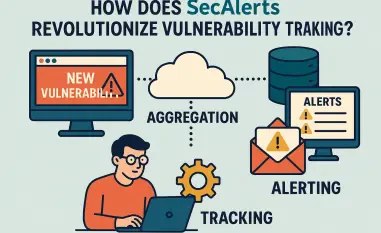In the rapidly shifting landscape of cybersecurity, anticipating and countering new threats has become a paramount concern for organizations worldwide, as highlighted by a recently released report from ISACA on October 20, 2025. This sobering forecast, based on the perspectives of nearly 3,000 digital trust professionals spanning fields like cybersecurity, IT audit, and governance, reveals a striking headline: AI-driven social engineering is poised to dominate as the most critical cyber threat for 2026. Far from being a mere technological novelty, this development signals a profound shift in how malicious actors exploit human behavior, using artificial intelligence to craft attacks that are alarmingly personal and convincing. As traditional threats like ransomware take a backseat, this report underscores an urgent call for innovative defenses. The following sections delve into the nuances of this emerging danger, exploring preparedness gaps, regulatory hurdles, and workforce challenges that shape the cybersecurity horizon.
The Rise of AI-Powered Manipulation
The emergence of AI-driven social engineering as a top threat for 2026, flagged by 63% of ISACA survey respondents, represents a significant evolution in cyberattack strategies. Unlike the broad, scattershot phishing attempts of previous years, this approach leverages artificial intelligence to create highly targeted manipulations. Imagine receiving a call from a trusted colleague—only it’s a deepfake voice engineered to trick someone into revealing confidential data or authorizing a fraudulent transaction. Such tactics exploit human trust in ways that are difficult to detect, surpassing concerns over ransomware (54%) and supply chain disruptions (35%). This shift highlights a growing sophistication in cybercrime, where the focus is less on breaking systems and more on deceiving individuals, making it a uniquely insidious challenge for organizations to address in the coming year.
Moreover, the implications of this trend extend beyond individual interactions to broader organizational vulnerabilities. As AI tools become more accessible, cybercriminals can scale these personalized attacks with alarming efficiency, crafting messages or media that mimic legitimate communications with uncanny accuracy. The ISACA report emphasizes that this isn’t a distant possibility but an imminent reality, with many professionals already noting early instances of such tactics in play. The psychological impact of these attacks cannot be understated—when trust in communication is eroded, even the most robust technical safeguards can be bypassed. Addressing this requires not just technological solutions but a fundamental rethinking of how employees are trained to recognize and resist such deceptions, marking a critical area for strategic focus.
Organizational Readiness Under Scrutiny
Despite the clear and present danger posed by AI-driven threats, the readiness of organizations to confront these risks remains worryingly inadequate. According to the ISACA findings, a mere 13% of surveyed professionals feel their organizations are “very prepared” to manage risks associated with generative AI, while a troubling 25% report being “not very prepared.” The root causes are evident: insufficient governance frameworks, outdated policies, and a lack of comprehensive training programs leave many entities exposed. This gap in preparedness is particularly concerning given the speed at which AI technologies are advancing, often outpacing the ability of companies to adapt. Without proactive measures, the potential for significant breaches through social engineering looms large, demanding immediate attention to bolster defenses.
Interestingly, amidst this uncertainty, there exists a strong recognition of AI’s potential as a force for good, with 62% of respondents prioritizing investment in AI and machine learning for 2026. This duality—viewing AI as both a threat and an opportunity—creates a complex dynamic for decision-makers. On one hand, leveraging AI for cybersecurity enhancements, such as threat detection and response automation, offers promising avenues to strengthen resilience. On the other, the same technology in malicious hands amplifies risks like never before. Balancing these perspectives requires a nuanced approach, where investments are paired with robust ethical guidelines and risk management strategies. The challenge lies in ensuring that enthusiasm for innovation does not overshadow the critical need for preparedness against AI-driven exploits.
Navigating a Complex Regulatory Environment
The regulatory landscape surrounding AI and cybersecurity adds another layer of difficulty for organizations aiming to mitigate emerging threats. The European Union has taken a pioneering stance with the EU AI Act, which seeks to establish a standardized framework for compliance, though its practical effectiveness is still under evaluation by industry watchers. In stark contrast, the United States grapples with a fragmented system, where the absence of federal legislation has led to a patchwork of state-level regulations. Described by ISACA’s Karen Heslop as a “compliance nightmare,” this inconsistency poses significant obstacles for businesses operating across multiple jurisdictions. With 66% of professionals rating regulatory compliance as “very important,” the pressure to align with evolving standards while maintaining operational agility is immense.
Beyond regional disparities, the broader impact of regulatory uncertainty affects trust and innovation in the cybersecurity sphere. Companies must navigate not only the legal requirements but also the potential for regulations to stifle technological advancement if overly restrictive. The ISACA report notes that 32% of respondents express anxiety over global compliance risks, reflecting a widespread concern about balancing security with business needs. As governments worldwide grapple with how to govern AI responsibly, the private sector faces the daunting task of anticipating future mandates while addressing current threats. This environment calls for collaborative dialogue between policymakers and industry leaders to craft frameworks that protect without hindering progress, ensuring that regulations serve as a shield rather than a barrier in the fight against AI-driven social engineering.
Addressing the Cybersecurity Talent Gap
Compounding the challenges of technology and regulation is the persistent shortage of skilled cybersecurity professionals, a hurdle that threatens to undermine even the best-laid plans. The ISACA survey reveals that only 18% of respondents believe their organizations possess a strong talent pipeline, a statistic that paints a grim picture of workforce readiness. While 39% of companies intend to expand their digital trust teams in 2026, a significant 44% anticipate difficulties in recruiting qualified candidates. This gap is not merely a numbers game; it reflects a deeper issue of specialized skills needed to counter sophisticated AI-driven threats. Without adequate human resources, the ability to implement and sustain effective defenses remains severely limited.
The urgency of building a capable workforce is echoed by ISACA’s Chris Dimitriadis, who advocates for a “stronger army” of cyber professionals to enhance digital resilience. This involves not just hiring but also investing in continuous education and upskilling programs to keep pace with rapidly evolving threats like social engineering. Organizations must look beyond traditional recruitment, exploring partnerships with academic institutions and offering incentives to attract talent into the field. Additionally, fostering a culture of cybersecurity awareness across all levels of an organization can amplify the impact of a limited workforce. As the threat landscape grows more complex, addressing this talent shortage becomes a cornerstone of any strategy aimed at safeguarding against the next generation of cyber risks.
Building Resilience for Tomorrow’s Challenges
Looking back at the insights from the ISACA report, it’s evident that the cybersecurity community faces a pivotal moment with the identification of AI-driven social engineering as the predominant threat for 2026. The stark gaps in organizational preparedness, coupled with regulatory inconsistencies, paint a challenging picture for professionals tasked with defending against these advanced tactics. The talent shortage further compounds these difficulties, revealing systemic issues that demand urgent resolution. Yet, amidst these hurdles, there is a clear commitment to harnessing AI’s potential responsibly through strategic investments. Moving forward, the focus must shift to actionable steps—establishing robust AI governance, enhancing employee training, and modernizing infrastructure. Collaboration between industry and regulators will be key to navigating compliance complexities, while sustained efforts to build a skilled workforce will underpin long-term resilience. These measures offer a roadmap to not only counter emerging threats but also shape a secure digital future.













